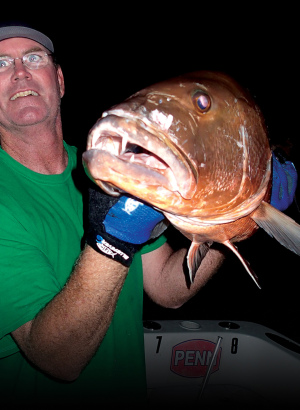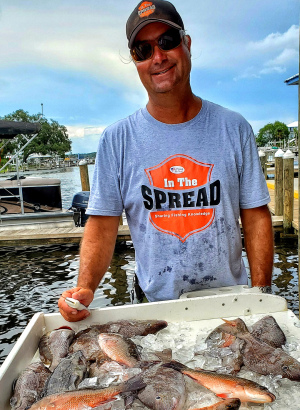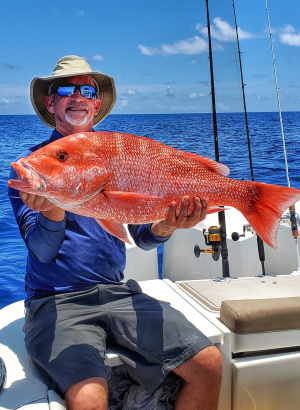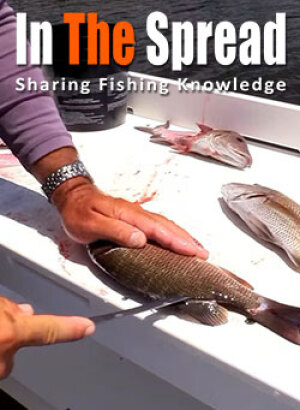Mutton snapper fishing requires skill and the right equipment. This guide unveils the best hooks for targeting these prized bottom-dwellers. From circle hooks to optimal sizes, we explore why hook selection matters. Discover how the right hook can significantly increase your chances of landing trophy mutton snapper on your next fishing adventure.

Mutton Snapper: Unveiling the Best Hooks and Why They Matter
Key Takeaways
- Mutton snapper are prized bottom-dwelling fish found in tropical and subtropical waters
- Circle hooks are preferred over J-hooks for mutton snapper fishing due to their effectiveness and fish safety
- Ideal hook sizes range from 5/0 to 8/0, with specific recommendations for different scenarios
- Hook material and design play crucial roles in successful mutton snapper fishing
- Proper rigging techniques and leader selection can significantly improve catch rates
- Understanding local regulations is essential for responsible mutton snapper fishing

The Art of Mutton Snapper Fishing
Mutton snapper fishing is a thrilling pursuit that requires skill, patience, and the right equipment. These fish are known for their cautious nature and tendency to inhabit rocky areas and reefs, making them a challenging but rewarding target for bottom fishing enthusiasts.
The key to successful mutton snapper fishing lies in the details. From your rig setup to your hook choice, every element plays a crucial role in enticing these wary fish to bite.
Capt. Ryan Van FleetWhen it comes to fishing for bottom fish like mutton snapper, your choice of hook can make all the difference between a successful day on the water and a frustrating experience. Our good friend Capt. Ryan Van Fleet at Good Karma Sportfishing shared a few of his favorite hooks with us recently, so let's explore various aspects of hook selection and why they matter so much in mutton snapper fishing.
Circle Hooks vs. J-Hooks: The Great Debate
Circle Hooks: The Angler's Secret Weapon
Circle hooks have revolutionized the way anglers approach mutton snapper fishing. Their unique design, featuring a circular bend that brings the point back toward the shank, offers several advantages:
- Reduced deep hooking: The circular design allows the hook to slide to the corner of the fish's mouth, reducing the chances of gut-hooking and improving fish survival rates.
- Increased landing rates: Once set, circle hooks are less likely to pull free during the fight, leading to more successful landings.
- Self-setting capabilities: Circle hooks often set themselves as the fish swims away with the bait, making them ideal for novice anglers or when fishing multiple lines.

Top Circle Hook Choices for Mutton Snapper
- BKK Extra Strong Circle Hook: Widely regarded as one of the best hooks for mutton snapper, the BKK Extra Strong Circle Hook in size 8/0 is a top choice for targeting larger specimens.
- Mustad Demon Perfect Circle Hook: The Mustad Demon Perfect in 5/0 size is an excellent option for smaller mutton snapper or when using live bait.
- Seaworx Hooks: Seaworx offers high-quality circle hooks in various sizes, with their 5/0 model being particularly effective for targeting average-sized mutton snapper.
J-Hooks: The Traditional Alternative
While circle hooks have gained popularity in recent years, some anglers still prefer J-hooks for mutton snapper fishing. However, it's important to note that J-hooks come with potential drawbacks and regulations:
- Increased risk of deep hooking: The straight design of J-hooks can lead to more frequent gut-hooking, potentially harming fish that need to be released.
- Requires a different technique: Anglers must actively set the hook when using J-hooks, which can be challenging when bottom fishing in deep water.
Hook Size and Material: Finding the Perfect Match
Choosing the Right Hook Size
Selecting the appropriate hook size is crucial for mutton snapper fishing success. The ideal size range typically falls between 5/0 and 8/0, depending on factors such as:
- Target fish size
- Bait type and size
- Fishing conditions
For example:
- The BKK 8/0 Extra Strong Circle Hook is excellent for targeting trophy-sized mutton snapper.
- The Mustad Demon Perfect Offset Circle Hook in 5/0 works well for average-sized fish and when using live bait.
- Seaworx Hooks in 5/0 are perfect for smaller mutton snapper or when finesse fishing is required.
Hook Material Matters
The material used in hook construction plays a significant role in durability and performance. Some popular options include:
- Stainless Steel: Offers excellent corrosion resistance, ideal for saltwater fishing.
- High-Carbon Steel: Provides superior strength and sharpness but may require more maintenance to prevent rust.
- Coated Hooks: Some manufacturers offer hooks with special coatings to enhance durability and reduce visibility underwater.
Rigging Techniques for Mutton Snapper Success
Proper rigging is essential for presenting your bait effectively and increasing your chances of hooking a mutton snapper. Here are some key considerations:
- Leader Material: Fluorocarbon leaders are popular due to their near-invisibility underwater. A 20-30 lb test fluorocarbon leader is typically sufficient for most mutton snapper fishing scenarios, but for bigger fish you may want to go up to 40-60 lb.
- Leader Length: The ideal leader length can vary depending on conditions, but a general rule of thumb is to use a leader between 3-6 feet long.
- Bait Presentation: Whether you're using live bait or dead bait, ensure it's securely attached to the hook without impeding its natural movement.
Mutton Snapper Fishing Regulations: Know Before You Go
Before embarking on your mutton snapper fishing adventure, it's crucial to familiarize yourself with local regulations. Here's a quick overview of some state-specific rules:
- Florida: Florida Fish and Wildlife Conservation Commission regulations
- North Carolina: North Carolina Division of Marine Fisheries regulations
- Louisiana: Louisiana Department of Wildlife and Fisheries regulations
Always check the most up-to-date regulations before your fishing trip, as rules can change seasonally or annually.

















